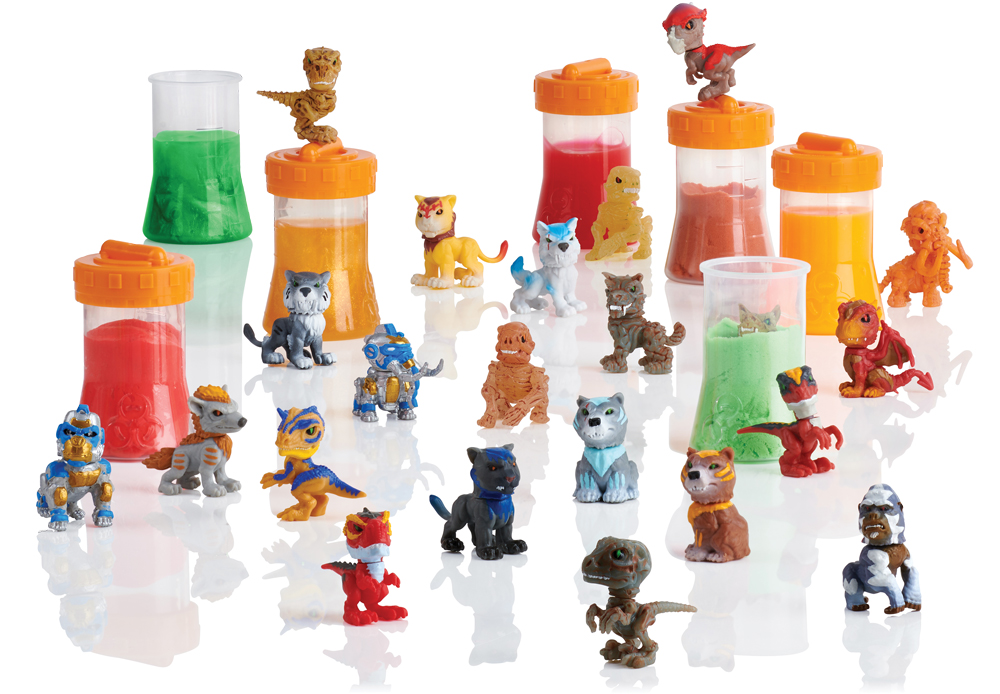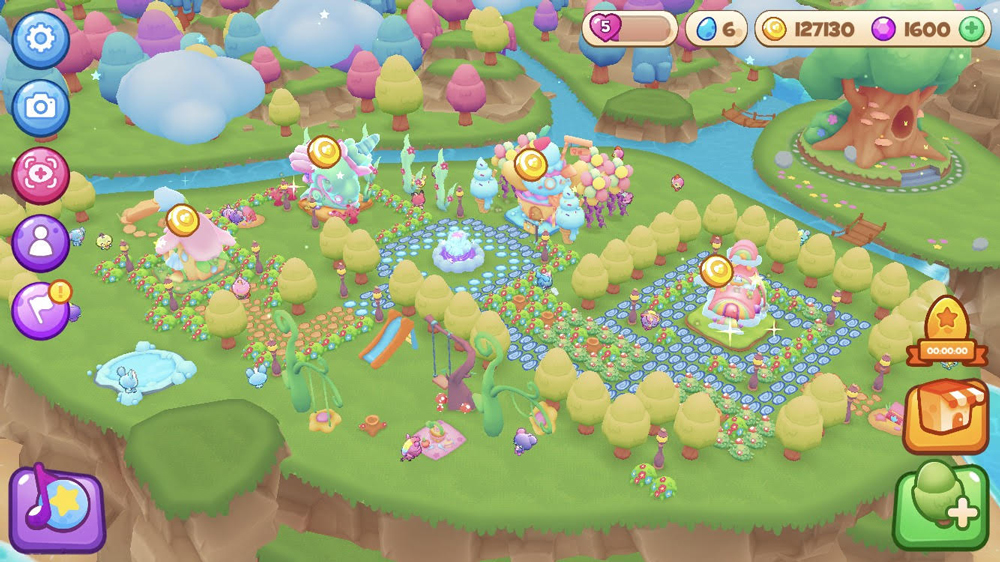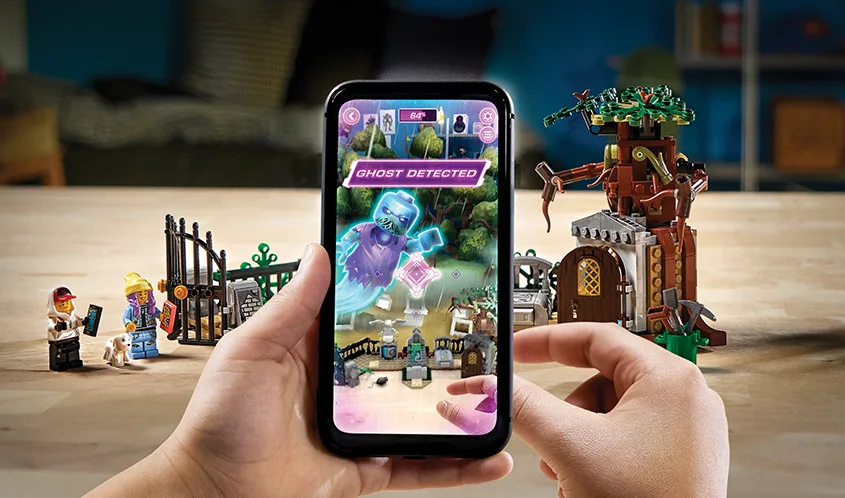A new generation of toy companion apps enters the market.
On first look, it seems the toy industry has stumbled upon two dueling trends: At the same time that “screen-free play” and “classic play” are becoming industry buzzwords, dozens of companies are releasing companion apps for their toys.
It sounds paradoxical that these two trends could coexist and thrive at once, but the two ideas may not be quite as separate as they seem.
David Kleeman, senior vice president of global trends at kids research and development agency Dubit, says the entire concept of “screen time” is somewhat flawed from the start. When looking at kids’ interaction with technology, time isn’t necessarily the best indicator. He says there are some screen-based behaviors with which parents are happy, which is key.
A few years back, when we saw toys utilizing apps for the first time, the apps’ role was a bit different. As Kleeman describes it, the early generation of toy-screen combinations put the screen between the child and the toy. Forcing kids to use the screen to control the toy physically disrupted kids’ natural play patterns. Now, many of the new companion apps perform a different function.
“We’ve now seen an evolution where more often the child is playing with the toy…” he says. “[The screen] either extends the story, or it acts as a score keeper, or in some way it contributes to play without becoming the play itself.”
This is an important distinction for a few reasons. To start, it means most of these toys can stand alone without the app. Andrew Yanofsky, Untamed brand manager at WowWee, says that is an incredibly important factor when developing a toy with a companion app. This year, WowWee will launch Untamed Mad Lab Minis, miniature hybrid creatures kids can collect in real life, then scan into the free Mad Labs augmented reality (AR) app.
“When we market and sell these toys, we’re selling toys first, period,” he says. “Our first inclination is, ‘Does this toy have merit on its own two feet with the price/value relationship that we’re offering? Is it worth the purchase?’ We don’t want to rely on the app as part of the purchase decision, but we do want to use the app as a brand enhancer, as a marketing tool, and as a way to get kids to come back to us.”
This idea of getting kids to “come back” is another key component in the new generation of companion apps. Done right, an app has the added capability of extending a toy’s play value. For example, Yanofsky says, the novelty of a toy line like Untamed — another WowWee product with an AR companion app — eventually wears off. “[Kids are] going to play with that dinosaur, they’re going to have a good time with it, and they’ll put it back in the toy box,” he says. However, companies can draw kids back to both the toy and the brand by adding new content or features to the app.

Making the technological component of the toy — in this case, the app — a separate entity also allows companies to sell these toys at a fairly low price point. The Mad Labs figures, for example, cost $5 at retail while Untamed cost $15.
Robin Raskin, founder of Living in Digital Times, says this is evidence of the industry realizing that most parents can’t afford tech toys at three-figure price points. The companion apps give kids the tech component they enjoy without breaking the bank.
“It’s just a lot less expensive to put a ton of technology in your app than to put it in the toy,” she says. “And so, in a way, you’re getting a toy that constantly refreshes itself. So hopefully it lasts longer as a plaything and just doesn’t sit on the shelf.”
AR is a common factor in many of the new companion apps for that reason. As Kleeman explains, nearly everyone carries around an AR-capable device in their pocket.
One example of successful AR integration, according to Raskin, is LEGO’s Hidden Side sets. The line, which will be available this summer, includes eight “haunted” building sets. As with any other LEGO product, kids physically assemble the set, but a companion app can overlay a variety of AR challenges and games on the set.
With the Hidden Side sets, kids physically manipulate the real-world product to solve mysteries, uncover items, and battle ghosts on the app. “LEGO Hidden Side is one of the first play experiences where the physical world influences the AR experience, instead of the other way around …” says Michael McNally, senior director of brand relations for the Americas at LEGO. “Because kids must keep one hand in the physical world at all times, the focus remains on the play set rather than solely on the screen.”
Again, this shows a shift toward incorporating classic play patterns into companion apps, rather than hindering them.
With so many toys offering companion apps, companies have to make theirs stand out. Raskin says kids will choose a few favorite apps to use regularly. “As adults, we keep I don’t know how many apps on our phone, but we probably use no more than seven of them regularly,” she says. “And I think kids will sort of have the same pattern — you’re going to have one or two favorites that you actually will spend the time engaging with the app, or the world, or the adventures. And some of the others you won’t touch.”
So what can companies to do be one of these chosen few? Kleeman says they must think beyond the first use and ahead to the tenth, making sure there is enough to do in the app to keep kids coming back. He says companies can do this by “putting creativity in the hands of the child,” and by evolving over time.
One upcoming toy-app combo Raskin believes gets this right is Spin Master’s Hatchtopia Life. Kids can collect and hatch the Hatchtopia Life plush in real life, but each plush includes a code kids can enter to unlock four surprises within the Hatchtopia Life app, which launches in June.
One of these surprises is a virtual Hatchimal to hatch, different than the real-life Hatchimal. Within the app, kids can customize their personal Hatchtopias and Hatchimals, message friends, and more. This app may not incorporate AR, but it offers a sense of community and the crucial element of creativity.

Kate Frostad, Hatchimals franchise director at Spin Master, says the company decided to create the Hatchtopia Life app for a few reasons. First, the brand saw success with its CollEGGtibles app, which has gathered more than 4.2 million downloads and more than 350 million minutes of play since launching two years ago. That app is more of a collector’s app with mini-games, while Hatchtopia Life builds on the lore Spin Master had already created for the Hatchimals brand.
“Personally, I think the worst mistake you can make is building an app just for the sake of building an app,” Frostad says. “It needs to make sense for the toy, for the user, and ultimately for your brand. Having said that, I think that the beauty of the Hatchtopia Life app is that it’s more than just an app. It’s part world building, part community, part entertainment. And the best of it is that it’s your world your way.”
Despite the positive aspects of these apps for both consumers and the industry, some issues — primarily privacy and safety concerns — remain around kids’ app usage. However, both Kleeman and Raskin believe companion apps are here to stay, as parents find a balance between screen time and classic play.
“In a way, it does speak to how kids play,” Raskin says. “There are times they’re going to want to be online and there are times that they’re not and this done well gives them reasons to do both at the right time.”
This article originally appeared in the March/April 2019 issue of the Toy Book.

